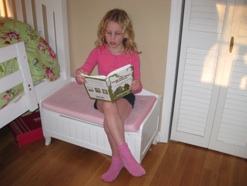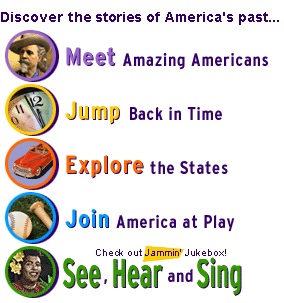Book Lists for Recreational Reading



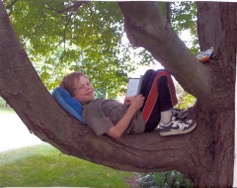
Fiction
“Children are likely to meet cruelty and violence in their lives and they need to see that good overcomes evil with perseverance and courage, as in fairy tales. Fairy tales show children that those who are cruel and violent end up being treated with cruelty and violence. Fairy Tales tell us that we reap what we sow.
Traditional literature also provides a fantasy world in which young children can view their own fears and frustrations and move toward an emotional integration- helping them resolve their fears and tensions.”
Fables are brief tales with animals generally representing a single human trait. The moral is explicitly stated, e.g., Hare and the Tortoise.
Tall Tales/ Legends are tales of historical figures which facts have been exaggerated to the extreme e.g., Johnny Apple Seed, Davy Crockett, Paul Bunyan, John Henry, Pecos Bill. The are designed for 4th and up.
-
•Myths, Folktales, and Fairy Tales/Scholastic Unit Plan

Folk Tales & Trickster Stories
Folktales have plots that are brief and filled with action. Characters are strong and predictable. Endings are swift and violent. Good is very good; evil is very evil. Because the characters are all good, all innocent, all beautiful or all evil, they help children make choices about what and who they want to be. In folk tales animals take on the characteristics of humans. They teach us that people have always loved, hated, were born and died,were angry, happy, sad, glad, had fears and tension such as Three Billy Goats Gruff, Three Little Pigs...
-
★Children’s Literature/Folk Literature “ Characteristics of Folk Literature: setting, character, plot , theme, style” Taiwan
-
★Folk Literature:Preserving the Storytellers’ Magic (Preview of an article)
-
•Tall Tales and Tricksters: Legends and Stories form American Folklore
-
✴Tall Tales sites: by Kati Mitchel
http://www.42explore.com/talltale.htm
Tall tales -
More ideas - Writing Tall Tales - Still more ideas
Paul Bunyon - http://www.paulbunyantrail.com/talltale.html
Tall Tales - http://www.kathimitchell.com/read2.htm#Tall%20Tales
Fairy Tales
Fairy tales and fantasy peak between ages six and eight but is needed in all stages of life. They have royalty, magic, good verse evil, no special place or time. Cinderella has hundreds of versions e.g. Mufaro’s Beautiful Daughter and Rough Faced Girl are stories of how hard work and kindness are rewarded, and haughty, meanness, and pride are punished. Fairy tales show children that those who are mean and violent end up being treated with cruelty and violence. Characters are either all good or all bad; all beautiful or all ugly, all kind or all mean as in Lon PoPo, a Chinese version of Little Red Riding Hood.
-
★Folk and Fairy Tells Lesson Plans and Resources
-
★Fairy Tales from Life READ WriteThink
-
•Fairy Tales Gone Wild: 10 Creative Ways to Teach Fairy Tales
-
•Fractured Fairy Tales &Fables with John Scieszka/Scholastic
-
•Sleeping Beauty Center for Puppetry Arts Online Study Guide
Music Education with Picture Books
Mysteries
Myths
Myths are tales whose heroes and heroines are godlike or show supernatural traits and super human power. They often offer an explanation of some natural phenomenon which science hadn’t discovered at the time the story was written. These are best for fifth grade and up.
Rhymes and Poetry
Rhymes and poetry is usually concise, musical, with much rhythm, rhyme, and repetition making it very appealing to the children and easy to remember. Poetry helps develop auditory discrimination. Being able to recognize different sounds is essential for children to become independent readers. Who doesn’t love Lady with the Alligator Purse, Down by the Bay, Alligator Pie, Yertle the Turtle ?
-
★Poetry Page on this site
Realistic Fiction
Are about coping with problems. Animals are often used to tell a story- eliminating the element of possible prejudice resulting in classics. They deal with coping and dealing with friendship. They model for adults how to deal with the everyday problems of children. Frances’, Franklin’s, and Little Bear’s parents model for us how parents ought to deal with the every day problems of children. The Terrible Thing that Happened at Our House deals with mother going back to work and not being able to meet everyone’s needs as she once did. Five Minutes of Peace is a story of a mother who is seeking for 5 min. of peace but the children follow her everywhere even to the bathroom. Mitch Is Moving deals with the trauma of leaving home.Frog and Toad deal with the annoyance of friendship, Peter Rabbit relates the penalties of of disobedience.
Humor
“To grow without laughter is to grow deprived.” Author unknown Laughter is good medicine for body and soul. A person who smiles and laughs a lot stay healthier. Here are some books that tickled my funny bone:
Dr. Seuss’s books Horton Hatches the Egg
Cloudy with a Chance of Meatballs by Jan Barrett
Owl at Home by Lobel
More Spaghetti, I Say? Level 2 by Rita Gelman
Mrs. Piggle-Wiggle by Betty Macdonald
Amelia Bedelia by Peggy Parish
Curious George Books by Margret Rey
Click, Clack, Moo Cows That Type by Doreen Cronin
Miss Nelson Is Missing series by Harry Allard
Principal and the Black Lagoon by Mike Thaler
There Was an Old Woman Who Swallowed a Fly
Three Little Wolves and the Big Bad Pig by Eugene Triviza
George and Martha by James Marshall
Doctor DeSoto by William Steig 3rd
Morris Goes to School by Bernard Wiseman L 1
Morris and Boris at the Circus by Wiseman
Pippi Longstocking
Julius by Kevin Henkes
Strega Nona’s Books by tomie DePaolo
Stupids by Harry Allard and other Stupid Books
Bill Peet’s Books
Fox at School by Edward Marshall
Stand Back I’m Going to Sneeze by Patricia Thomas
Morris Has a Cold by Bernard Weisman

Concept Books: Shapes and Things
Color Books: Rabbit’s Color Book, Rainbow Paint, Color Dance, Mouse Paint.
Counting Books: The Doorbell Rang, 1,2,3 to the Zoo...
VanderGrift's Children's Literature Page:
more tips for sharing literature with young people. Also examines various genres in children's literature, including modern realistic fiction, fanciful fiction, regional and historical fiction, biography, informational materials, and poetry.
Non-Fiction
Reviews 33 tradebooks which focus on the natural world and its inhabitants. Organizes books by taxonomic class and age level
The amount of independent, silent reading children do both in and out of school is “significantly related to gains in reading achievement,”
says the Commission of Reading in Becoming a Nation of Readers.
The number of books in the home is the only variable that directly correlates with reading scores.
IRAPresident Patricia A. Edwards Reading Today April/May 2011
Choose literature books /picture books over supermarket books. Golden Books lack the artistic touch of great artists. Picture books help children to develop a sense of story structure. The pictures tell the story in a picture book - great for ESL students.
Literature helps children deal with their problems. By finding out about the problems of others through books, children receive insights into dealing with their own problems, a process called bibliotherapy. Children might identify with Gilly, living resentfully in a foster home in Katherine Paterson's The Great Gilly Hopkins, or with Mary Alice, a city girl forced to live with her grandma in a "hick town" in Richard Peck's A Year Down Yonder. Stories tell of the past; drama you become the story.
Literature helps us to make sense of the world and our place in it. It helps us to understand who we are; what our place is in this world’ How we do things and why.
Helps develop our sense of empathy and understanding of others making us better human beings.
Life unfolds in many ways – often we can’t control what happens but literature helps us cope- not to die off.
-
★S-Collection Predictable Story Book Martinez, Miriam and Marcia F. Nash (1991)Bookalogues Authors with multiple Titles
-
★Banes & Noble / timeless Picture Books 24 pages
-
★ 101 Chapter Books to Read (or hear) Before you Grow Up Feels Like Home
-
★Read Aloud to student each day. Teacher read-aloud has been shown to be one of the major motivators for children to read. My grandson, when in third grade, often came home asking for his parents to purchase the book his teacher was reading in school. Those stories helped empower him to write and create his own stories.
-
★Begin developing strategies and thinking skills during read aloud time - preferably a story with the same theme as the story used to develop the language arts skills.
Effective read-alouds are those in which children are actively involved asking and answering questions and making predictions rather than passively listening...
The first read-aloud includes 4 components: book introduction, voc. support techniques, analytical comments & questions, and an after reading, “why” questions.
The authors suggest three readings of the same story.
First Day: Give a few sentences about the main character and main problem; use illust. on cover, back, and title page as needed. Intro. 5-10 words, pointing to illust., gesturing, or giving definitions. Make comments suggesting what the main character is thinking or feeling. Ask a few question thought questions. After rdg. ask “why” questions. Demonstate how to answer by saying, “I’m thinking...”
Second Day/second read-aloud: Ask about the characters and problem - motive and thoughts. Recall new voc. and expand on definition and dramatize the words. Focus on other characters - what they are thinking or feeling. End with e more analytical questions. Use follow-up questions to prompt their thinking.
Third Day: Ask the children to identify the problem and describe the solution. Recall title of book. Before reading show illustrations and ask what is happening . Before turning the page ask what is going to happen next. Draw attention to some voc. in different contexts. Ask another “why” question or “What would have happened if...?”
Lea M. McGee & Judith A. Schickendanz in 5/2007 Rdg.Teacher
-
★Tips Independent Reading /Recreational Reading is a great means of developing a love of reading. It is also a great means of reinforcing skills and developing confidence.
Recreational reading at home is essential. As a former president of the IRA once said, “You don’t have to read every night - just on the nights you eat.” The school needs to provide reading material for home use. All too often books can be signed out from the school library but with insufficient guidance in finding independent reading material. Plus, one book a week is insufficient. Children need reading material they can read to their caregiver and books the caregivers can read to them. Some reading series provide booklets as take-home books.
Some teachers provide Thematic Back Packs to be taken home for the week. Samples of back packs is on the “Family Rdg./Back Packs” page on this site.
Within each bag may be 5 to 7 or more books that revolve around one theme different levels. One level is for the students to read independently or to his/her family or caregiver. The second level is for caregivers to read to the child. A read-along tape/s or CD is included to use as a surrogate caregiver. When caregivers are too busy to read one night, the child can listen and follow along with a read-along book. A notebook can be enclosed for either the child or the caregivers to write a note about the bag; e.g., such as their favorite book. I do not suggest enclosing games or stuffed animals because all too often they do no find their way back into the bag.
A calendar is given out each month for parent/caregivers to initial and note the amount of time spent on reading each night. I posted the completed calendars on the bulletin board outside my classroom.
Keep the backpack reasonably light so the children don’t injure their backs.
Of course the public library is a phenomenal source, but getting to the public library is problematic for some families. Books stores are great but not all families can afford to buy their reading material.
My personal money was used to purchase and create the book bags: books, tapes, notebooks, and bags.
I worked with a colleague that had a room in her home filled with trade books. With each new theme she would roll in cartons of new titles and take home the old ones.
If teaching is your life, you take the means necessary to enjoy the process of achieving your goals.
Read Aloud Lists: Read To
The Classroom Library
should have 7 times as many trade books as there are children.
Minimum: 7 Books Per Child
A key ingredient to a school’s successfully promoting independent reading is ready access to books in school or classroom library says the commission of reading in
Becoming a Nation
However, Cheryl Deaton, a 4th grade teacher, who was awarded Tenn.’s Teacher of the Year maintained that a classroom library should have 2,500 books
Home activity: recording stories at home
Children are encourage to make up their own story, record the story and develop their own sound effects. They have great fun at Halloween time making all kinds of weird sounds. Children, siblings, or friends are very clever in using recording devices. Some like to pretend they have their own Talk Show and like to interview people. Adding sound effects makes it very entertaining.
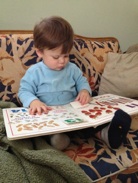
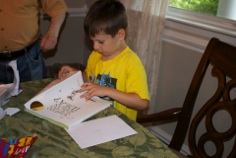
Great Websites for Children’s Literature
-
★HarperCollins Children’s Books Children’s books are displayed accompanied with a video; author’s photos are also displayed- click to read about their lives.
-
•Best Books for Second Graders on the Web by We Are Teachers
-
★Books for Grades K-3 TeachersFirst(all my favorites)

All inclusive
Free, Used, and New:
-
 Can You Find It?- Bernard Most- 150 million books for the search finder to search for authors or titles and price of new /used
Can You Find It?- Bernard Most- 150 million books for the search finder to search for authors or titles and price of new /used -
★Non Fiction/ Informational
Science

Suggested by Bella via Alussa Riggs
Books for Boys
-
✦Books about Family- Great Books!
Int’l Literacy Association Reading Lists
Children’s Choices 2018 Reading List
Purchase Purchase
From From
Clap Your Hands
Cauley, L
Chant
Rhyming text with excellent meter. Children to follow directions
Scholastic
Cookie's Week
DePaola, T.
Recount
Predictable Book DePaola Author Study
Scholastic
Corn on and off the Cob
Fowler, A.
Info Book
Farming, Native Americans
3.96 - Border.com Rookie Reader
Dinner at the Panda Palace
Calmenson, S.
Counting Book/ Story
Rhyming Text
Scholastic
Don't Forget the Bacon
Hutchins, P.
Story
Remembering Hutchins Author Study Phonemic Awareness Hutchins Author Study
Scholastic
Dr. Seuss's ABC
Seuss
Alphabet Book
Rhyme, Alphabet
5.59 - Borders.com
Each Peach Pear Plum
Ahlberg, J. & A.
"I Spy" Book
Nursery Rhyme Predictable Text
Scholastic
Eating Fractions
McMillan, B
Info Book, Math
Math Food
Scholastic
Eating the Alphabet
Ehlert, L.
Alphabet Book
Growing
Scholastic
Farm Alphabet Book
Miller, J.
Alphabet Book
Alphabet Farm Objects
Scholastic
Feast for 10
Falwell,
Counting Book
Dinner Preparations Numbers Af-Am Family
Scholastic
Fiddle-I-Fee
Sweet, M.
Song
Farm Animals
Scholastic
Fish Eyes
Ehlert
Counting Book
Number Concepts Ehlert Study
Scholastic
Freight Train
Crews, D.
Info
Predictable Text Transportation Unit Crews Author Study
Scholastic
Webbing Into Literacy: Laura B. Smolkin, 1999 101 Best Books for the Head Start/Preschool Library lbs5z@virginia.edu
Title Title
Author Author
Genre Genre
Use Use
Purchase Purchase
From From
Froggy Gets Dressed
London, J.
Story
Winter Attention to Sound
Scholastic
Froggy Goes to School
London, J.
Story
Sounds Kindergarten Transition
Scholastic
From Cow to Ice Cream
Forman, M.
Info
Sequence Ice Cream
5.56- Amazon.com or Borders.com
Goldilocks & the Three Bears
Marshall, J.
Folk Tale
Acting Out Story Structure Brett Author Study
Scholastic
Good Night, Gorilla
Rathman, P.
Wordless Story (mostly)
Zoo
Bed Time Language Development Compare/Contrast - Day the Goose Got Loose Rathman Author Study
Scholastic
Happy Birthday, Martin Luther King
Marzollo, J. /Pinkney, B.
Info
Holidays
Scholastic
Happy Birthday, Moon
Asch, F.
Story
Echoes
Scholastic
Harold & the Purple Crayon
Crockett, H.
Story
Imagination Crayon Unit
Scholastic
Have You Seen My Duckling?
Tafuri, N.
Story
Predictable Text Where's Waldo aspect
Scholastic
Houses and Homes
Morris, A.
Info Book
Social Studies
3.96 - Amazon.com
How a Seed Grows
Jordan
Info Book
Planting suggestions Attention to different Seeds
3.96 - Amazon.com or Borders.com
How Kittens Grow
Selsam, M.
Info Book
Growing Animals
Scholastic
I Can't Said the Ant
Cameron, Polly
Story
Rhyming Text
Scholastic
Webbing Into Literacy: Laura B. Smolkin, 1999 101 Best Books for the Head Start/Preschool Library lbs5z@virginia.edu
Title Title
Author Author
Genre Genre
Use Use
Purchase Purchase
From From
I Know an Old Lady
Karas, G. B.
Song
Puppets
Scholastic
I like books
Browne, A.
Recount
Enumeration of book types
Scholastic
In the Tall, Tall Grass
Fleming, D.
Recount
Rhyming Text Nature Observation
Scholastic
It Begins With an A
Calmenson, S.
Alphabet, Riddle
ABC Book Riddle Writing
Scholastic
It's Thanksgiving
Prelutsky, J.
Poetry
Holiday
Scholastic
Jake Baked the Cake
Hennessy, B.
Story
Phonemic Awareness/Rhyme
Scholastic
Jamberry
Degen
Poetry
Phonemic Awareness
Scholastic
Kindergarten Kids
Senisi, E.
Info Book
Spring book
Scholastic
Learning is Fun with Mrs. Perez
Flanagan, A.
Info Book
Transition to Kindergarten
5.56- Borders.com
Leo the Late Bloomer
Kraus, R.
Story
Developing Abilities
Scholastic
Lion Dancer: Ernie Wan's Chinese New Year
Waters, K.
Info Book
Chinese New Year Celebration
Scholastic
Miss Bindergarten Gets Ready for Kindergarten
Slate
Storybook Rhyming Text
Transition to K
Scholastic
Miss Nelson is Missing
Allard
Story
Behaving in School
Scholastic
My Crayons Talk
Karas
Chant-like
Rhyming Text Karas Illustration
Scholastic
My First Kwanzaa Book
Chocolate, D.
Info Book
Holidays
Scholastic
Noisy Nora
Wells
Story
Feelings
Scholastic
Officer Buckle and Gloria
Rathman, P.
Story
Safety Rathman Author Study
Scholastic
On the Go
Morris, A.
Info
Transportation
Scholastic
Webbing Into Literacy: Laura B. Smolkin, 1999 101 Best Books for the Head Start/Preschool Library lbs5z@virginia.edu
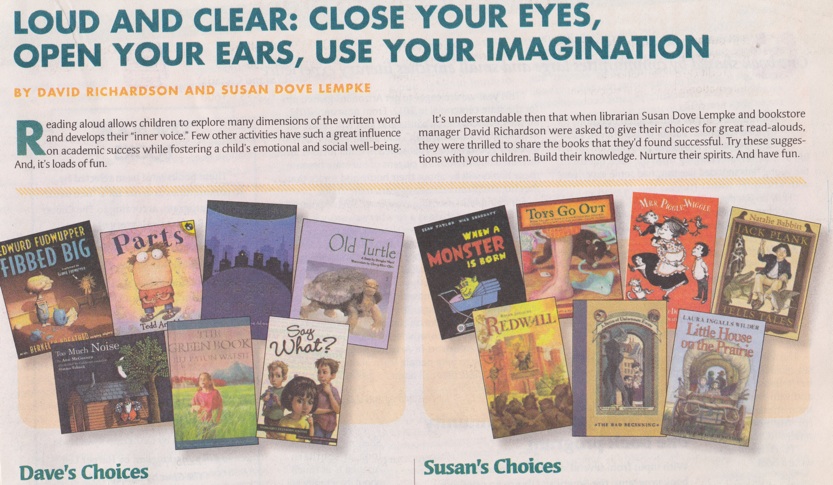
Ages 5-8
Ages 10 & Up
Ages 7-10
Ages 7-10
Jack Blank
Ages 8-12
Ages 9-12
Originally written for blind children/
very vivid language with lots of action
Bad Beginning
Ages 9-14
13 book series-
great read aloud
Ages 8-11
Ages 6 & up
Ages 4 & up
Time Stops for No Mouse
Ages 10 and up
Ages 8 & up
Ages 3-10
Ages 8-12
“Education is not the filling of a pail, but the lighting of a fire.”
W.B Yeats
BENEFITS OF READING
-
•“In six minutes of reading, stress levels begin lowering
-
•Reading boosts imagination, creativity and empathy
-
•Reading before bed improves the quality of sleep
-
•Books encourage responsible citizens” By Liza Frenette
-
"The single most important activity for building the
knowledge required for eventual success in reading
is reading aloud to children. "
Commission on Reading in a Nation of Readers
Bibliography
That's Incredible!
Books for Independent Reading/Leveled
Books for Independent Reading;
Reading By Children
VERY EASY
-
•The Cow That Went OINK
by Bernard Most
Harcourt 1990 (32p)
A cow that oinks and a pig that moos teach each other the words they know. Available in Spanish as La vaca que decía OINK.
-
•I Pretend
by Heidi Goennel
Tambourine 1995 (32p)
A child's imagination turns ordinary moments into adventures.
-
•Dinner at the Panda Palace
by Stephanie Calmenson
(Math)
Harper 1995 (32p) paper
All kinds of hungry animals show up at the Panda Palace for a hearty meal.
-
•The Wizard
by Bill Martin, Jr.
Harcourt 1994 (32p)
A wizard casts a spell that eventually causes his own disappearance.
EASY
-
•Night Becomes Day
by Richard McGuire Viking 1994 (32p)
Night evolves into day and back again.
-
•The Napping House
by Don and Audrey Wood Harcourt 1984 (32p) paper
A flea wakes everyone from their slumber on a cozy bed.
-
•Mouse TV
by Matt Novak Orchard 1994 (32p)
When their TV goes blank, the mouse family discovers the fun of doing things.
-
•The Vegetables Go to Bed
by Christopher King Crown 1994 (32p)
Each vegetable in the garden prepares for sleep in its own way.
-
•Cat-Fish
by Jill Newton Lothrop 1992 (24p)
Winston, a fisherman's cat, decides to try living in the ocean.
AVERAGE
-
•A Most Unusual Lunch
by Robert Bender Dial 1994 (32p)
When a hungry frog swallows a beetle, it sets off a series of unusual events.
-
•Animals Don't Wear Pajamas: A Book About Sleeping
by Eve B. Feldman (Science/Health)
Holt 1991 (32p)
A look at the unusual sleeping habits of sixteen different animals.
-
•Komodo!
by Peter Sís Greenwillow 1993 (32p)
A boy goes to an Indonesian island, where he finds the Komodo dragon.
-
•Mrs. Merriwether's Musical Cat
by Carol Purdy Putnam 1994 (32p)
A stray cat has a surprising effect on Mrs. Merriwether's piano students.
-
•The Mysterious Tadpole
by Steven Kellogg Dial 1977 (32p); 1979 paper
Louis's tadpole turns into a Loch Ness monster.
-
•When Bluebell Sang
by Lisa Campbell Ernst
Bradbury 1989 (32p); Macmillan paper 1992
A cow named Bluebell gains fame and fortune with her wonderful singing voice.
-
•How the Second Grade Got $8,205.50 to Visit the Statue of Liberty
by Nathan Zimelman (Math)
Whitman 1992 (32p)
A second grade class raises money to visit the Statue of Liberty.
-
•The Cow Who Wouldn't Come Down
by Paul Brett Johnson Orchard 1993 (32p)
Miss Rosemary resorts to trickery to get her flying cow, Gertrude, back on the ground.
-
•The Day the Goose Got Loose
by Reeve Lindbergh Dial 1990 (32p)
A goose causes comical chaos in the farmyard when it flies away from its coop.
-
•Martha Calling
by Susan Meddaugh Houghton 1994 (32p)
Martha the dog wins a vacation at an inn where no dogs are allowed.
-
•Gertrude the Bulldog Detective
by Eileen Christelow Clarion 1992 (32p); also paper
When Gertrude the bulldog becomes a detective, she helps catch two art thieves.
-
•Ming Lo Moves the Mountain
by Arnold Lobel (Multicultural)
Greenwillow 1982 (32p) paper
Ming Lo's wife wants him to move the mountain next to which they live.
-
•Ben's Trumpet
by Rachel Isadora (Multicultural)
Greenwillow 1979 (32p); Mulberry 1991 paper
A jazz-loving boy's dreams come true when he plays a real musician's trumpet.
-
•Chicken Little
by Steven Kellogg Morrow 1985 (32p); also paper
A fox attempts to hijack a chicken truck, setting off a surprising chain of events in this madcap story. Available in Spanish asPollita pequeña.
CHALLENGING
Roxaboxen
by Alice McLerran
Lothrop 1991 (32p)
A group of children use their imaginations to create a city in the desert.
Our Amazing Animal Friends
by Gene S. Stuart
(Science/Health)
National Geographic Society 1994 (34p)
This book describes record holders in the animal world, including the largest lizard and the fastest mammal.
Imogene's Antlers
by David Small
Crown 1988 (32p)
A young girl wakes up one morning to discover she's sprouted a huge set of antlers.
The Paper Crane
by Molly Bang
(Multicultural)
Greenwillow 1985 (32p); Mulberry 1987 paper
A paper crane that comes to life restores the fortunes of a kind man.
Just Plain Fancy
by Patricia Polacco
Putnam 1990 (32p)
Two Amish children discover an abandoned egg that hatches a beautiful peacock.
Paul Bunyan
by Steven Kellogg
Morrow 1993 (48p); Mulberry 1994 paper
The remarkable exploits of the hero of an American tall tale. Available in Spanish asPaul Bunyan.
Anansi and the Talking Melon
by Eric Kimmel
(Multicultural)
Holiday 1994 (32p); also paper
A spider tricks Elephant into thinking that the melon in which he's hiding can talk.
A Snake Mistake
by Mavis Smith
Harper 1991 (32p); also paper
This is a story based on the real account of a snake that swallowed a light bulb.
The Magic Schoolbus in the Time of the Dinosaurs
by Joanna Cole
Scholastic 1994 (32p)
The Magic Schoolbus transports Ms. Frizzle's class back to prehistoric times.
Incredible Dinosaurs
by Christopher Maynard
(Science/Health)
Snapshot 1994 (32p)
Captioned photographs relay fascinating facts about different dinosaurs.
How Much Is a Million?
by David M. Schwartz
(Math)
Lothrop 1985 (40p); Scholastic paper
Marvelosissimo the Mathematical Magician explains the numbers a million, a billion, and a trillion.
Pudmuddles
by Carol Beach York
Harper 1993 (48p)
Mr. and Mrs. Pudmuddle do many things backward, such as eating dinner for breakfast.
Everyday Mysteries
by Jerome Wexler
(Science/Health)
Dutton 1995 (32p)
This book displays close-up photographs of everyday objects and challenges children to guess what they are.
Books for Teachers to Read Aloud
To Children
Time Train
by Paul Fleischman
Harper 1991 (32p); also paper
During a field trip to Utah's Dinosaur National Monument, Miss Pym's class goes back in time to the Jurassic period.
Meteor!
by Patricia Polacco
Putnam 1987 (32p)
The entire town turns out to gawk at the sight of a meteor in Gramma and Grampa Gaw's front yard.
Horton Hatches the Egg
by Dr. Seuss
Random 1940 (64p); also paper
Horton the Elephant agrees to egg-sit for a lazy bird named Mayzie.
Flat Stanley
by Jeff Brown
Harper 1964 (64p); also paper
Stanley Lambchop wakes up to discover that he's flat, and he has a series of funny adventures. Available in Spanish as Stanley, El Plano.
Books for Shared Reading- Reading
With Children
And to Think That I Saw It on Mulberry Street
by Dr. Seuss
Random 1989 (32p)
Marco imagines all kinds of fantastical sights on Mulberry Street.
Fortunately
by Remy Charlip
Macmillan 1980 (40p); Aladdin 1993 paper
On his way to a birthday party, Ned has a series of comic misadventures.
The Giant Jam Sandwich
by John V. Lord
Houghton 1987 (32p); also paper
The citizens of Itching Down devise a clever way to get rid of four million wasps.
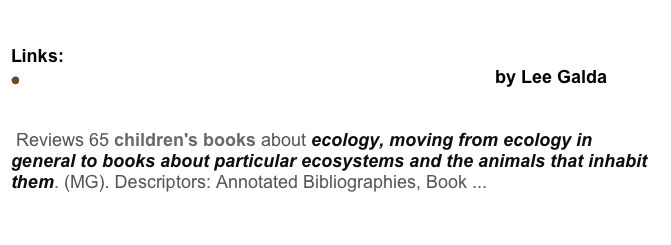





More lists of books for easy reading Grades 1 & 2
Reading for Grades 1 and 2
Publisher’s Series
Bright and Early Books (Random House)
Berenstain Bears in the night
Bears on Wheels
Inside outside upside down
The spooky old Tree
LeSieg The eye book
In a people house
The tooth book
Seuss The foot book
Early I Can Read Books (Harper & Row)
Bonsall And I mean it, Stanley
The day I had to play with my
sister
Mine’s the best
Who’s afraid of the dark?
Gackenback Hatie Rabbit
Hoff Barkley
Mrs. Brice’s mice
Thunderhoof
Walpole
Who will be my friends?
Hurd Come and have fun
Kaye Will you cross me?
Minarik Cat and dog
Parish Dinosaur Time
Seuss Hop on Popl
First Read-By-myself books (Addison -Wesley
Wolcott Beware of a very hungry fox
Eeeeeeeek!
Tunafish sandwiches
Hello Reading (Viking Kestrel)
Ziefert Nicky upstairs and downstairs
Say goodnight!
Giant First -Start Reader (Troll Associates)
Caitlin You dirty dog
Gordon The jolly monsters
Maxwell Mouse
Play ball, Kate
Gray Yummy, Yummy
Palazzo Rainy day fun
Sabin Birthday Surprise
Rookie Reader (Children’s Press)
Greene Hi, Clouds
Shine, Sun!
Snow Joe
Hamsa Dirty Larry
Fast Draw Freddie
Lillegard Where is it?
McKissack Who Is Who?
Matthias I Love Cats
Over-under
Petrie Hot Rod Harry
Joshua James Likes Trucks
Start to Read Books (School Zone Publishing Co.)
Gregorich Beep, Beep
The Gum on the Drum
I Want a Pet
Sue Likes Blue
Johnson I want to be a Clown
Simon Benny’s Baby Brother
Foolish Goose
Stepping Into Reading (Random House)
Hayward Hello, House!
O’Connor The Teeny Tiny Woman
Phillips My New Boy
Ziefert A Dozen Dogs
Sleepy Dog
So Hungry!
The Word Books (Aro-Publishing Co.)
Cox Fire Drill
Flowers
Reese Crab Apple
Little Dinosaur
Sunshine
Schoder Funny Bunny
Shebar Milk
Night Monsters
Winder Who’s New at the Zoo?
Other Beginning-To-Read TITLES:
Barton Where’s the Bear
Charles Calico Cat at School
Calico Cat at the Zoo
Calico Cat Looks Around
Eastman Go, Dog, Go
Gemme Soccer Is Our Game
Ginsburg Across the Stream
Gomi Coco Can’t Wait!
Jabobs The Monkey and the Bee
Krauss The Carrot Seed
Moncure No! No! Word Bird
Word Bird Makes Words with Cat
Word Bird’s Circus Surprise
Word Bird’s Hats
Riggio Wake Up, William
Shaw Sheep in a Jeep
Siewert Bear Hunt
Stadler Cat at Bat
Hooray for Snail
Snail Saves the Day
Three Cheers for Hippo!
Wahl Rabbits on Roller Skates
Ward Cookie’s Week
Wolff A Year of Beasts
A Year of Birds
Zinneman-Hope Find You Coat Ned
Let’s Go Shopping Ned
Let’s Play Ball Ned
Time for Bed Ned
-
Caldecott Books:
-
2012: A Ball for Daisy by Chris Raschka (Schwartz & Wade Books, an imprint of Random House Children's Books, a division of Random House, Inc.)
-
2011: A Sick Day for Amos McGee illustrated by Erin E. Stead, written by Philip C. Stead (Neal Porter Books/Roaring Brook Press, an imprint of Macmillan Children's Publishing Group)
-
2010: The Lion & the Mouse by Jerry Pinkney (Little, Brown and Company)
-
2009: The House in the Night illustrated by Beth Krommes, written by Susan Marie Swanson (Houghton Mifflin Company)
-
2008: The Invention of Hugo Cabret by Brian Selznick (Scholastic Press, an imprint of Scholastic)
-
2007: Flotsam by David Wiesner (Clarion)
-
2006: The Hello, Goodbye Window Illustrated by Chris Raschka, written by Norton Juster (Michael di Capua/Hyperion)
-
2005: Kitten's First Full Moon by Kevin Henkes (Greenwillow Books/HarperCollinsPublishers)
-
2004: The Man Who Walked Between the Towers by Mordicai Gerstein (Roaring Brook Press/Millbrook Press)
-
2003: My Friend Rabbit by Eric Rohmann (Roaring Brook Press/Millbrook Press)
-
2002: The Three Pigs by David Wiesner (Clarion/Houghton Mifflin)
-
2001: So You Want to Be President? Illustrated by David Small; text by Judith St. George (Philomel Books)
-
2000: Joseph Had a Little Overcoat by Simms Taback (Viking)
-
1999: Snowflake Bentley, Illustrated by Mary Azarian ; text by Jacqueline Briggs Martin (Houghton)
-
1998: Rapunzel by Paul O. Zelinsky (Dutton)
-
1997: Golem by David Wisniewski (Clarion)
-
1996: Officer Buckle and Gloria by Peggy Rathmann (Putnam)
-
1995: Smoky Night , illustrated by David Diaz; text: Eve Bunting (Harcourt)
-
1994: Grandfather's Journey by Allen Say; text: edited by Walter Lorraine (Houghton)
-
1993: Mirette on the High Wire by Emily Arnold McCully (Putnam)
-
1992: Tuesday by David Wiesner (Clarion Books)
-
1991: Black and White by David Macaulay (Houghton)
-
1990: Lon Po Po: A Red-Riding Hood Story from China by Ed Young (Philomel)
-
1989: Song and Dance Man , illustrated by Stephen Gammell; text: Karen Ackerman (Knopf)
-
1988: Owl Moon , illustrated by John Schoenherr; text: Jane Yolen (Philomel)
-
1987: Hey, Al , illustrated by Richard Egielski; text: Arthur Yorinks (Farrar)
-
1986: The Polar Express by Chris Van Allsburg (Houghton)
-
1985: Saint George and the Dragon , illustrated by Trina Schart Hyman; text: retold by Margaret Hodges (Little, Brown)
-
1984: The Glorious Flight: Across the Channel with Louis Bleriot by Alice & Martin Provensen (Viking)
-
1983: Shadow , translated and illustrated by Marcia Brown; original text in French: Blaise Cendrars (Scribner)
-
1982: Jumanji by Chris Van Allsburg (Houghton)
-
1981: Fables by Arnold Lobel (Harper)
-
1980: Ox-Cart Man , illustrated by Barbara Cooney; text: Donald Hall (Viking)
-
1979: The Girl Who Loved Wild Horses by Paul Goble (Bradbury)
-
1978: Noah's Ark by Peter Spier (Doubleday)
-
1977: Ashanti to Zulu: African Traditions , illustrated by Leo & Diane Dillon; text: Margaret Musgrove (Dial)
-
1976: Why Mosquitoes Buzz in People's Ears , illustrated by Leo & Diane Dillon; text: retold by Verna Aardema (Dial)
-
1975: Arrow to the Sun by Gerald McDermott (Viking)
-
1974: Duffy and the Devil , illustrated by Margot Zemach; retold by Harve Zemach (Farrar)
-
1973: The Funny Little Woman , illustrated by Blair Lent; text: retold by Arlene Mosel (Dutton)
-
1972: One Fine Day , retold and illustrated by Nonny Hogrogian (Macmillan)
-
1971: A Story A Story , retold and illustrated by Gail E. Haley (Atheneum)
-
1970: Sylvester and the Magic Pebble by William Steig (Windmill Books)
-
1969: The Fool of the World and the Flying Ship , illustrated by Uri Shulevitz; text: retold by Arthur Ransome (Farrar)
-
1968: Drummer Hoff , illustrated by Ed Emberley; text: adapted by Barbara Emberley (Prentice-Hall)
-
1967: Sam, Bangs & Moonshine by Evaline Ness (Holt)
-
1966: Always Room for One More , illustrated by Nonny Hogrogian; text: Sorche Nic Leodhas, pseud. [Leclair Alger] (Holt)
-
1965: May I Bring a Friend? illustrated by Beni Montresor; text: Beatrice Schenk de Regniers (Atheneum)
-
1964: Where the Wild Things Are by Maurice Sendak (Harper)
-
1963: The Snowy Day by Ezra Jack Keats (Viking)
-
1962: Once a Mouse , retold and illustrated by Marcia Brown (Scribner)
-
1961: Baboushka and the Three Kings , illustrated by Nicolas Sidjakov; text: Ruth Robbins (Parnassus)
-
1960: Nine Days to Christmas , illustrated by Marie Hall Ets; text: Marie Hall Ets and Aurora Labastida (Viking)
-
1959: Chanticleer and the Fox , illustrated by Barbara Cooney; text: adapted from Chaucer's Canterbury Tales by Barbara Cooney (Crowell)
-
1958: Time of Wonder by Robert McCloskey (Viking)
-
1957: A Tree Is Nice , illustrated by Marc Simont; text: Janice Udry (Harper)
-
1956: Frog Went A-Courtin' , illustrated by Feodor Rojankovsky; text: retold by John Langstaff) (Harcourt)
-
1955: Cinderella, or the Little Glass Slipper , illustrated by Marcia Brown; text: translated from Charles Perrault by Marcia Brown (Scribner)
-
1954: Madeline's Rescue by Ludwig Bemelmans (Viking)
-
1953: The Biggest Bear by Lynd Ward (Houghton)
-
1952: Finders Keepers , illustrated by Nicolas, pseud. (Nicholas Mordvinoff); text: Will, pseud. [William Lipkind] (Harcourt)
-
1951: The Egg Tree by Katherine Milhous (Scribner)
-
1950: Song of the Swallows by Leo Politi (Scribner)
-
1949: The Big Snow by Berta & Elmer Hader (Macmillan)
-
1948: White Snow, Bright Snow , illustrated by Roger Duvoisin; text: Alvin Tresselt (Lothrop)
-
1947: The Little Island , illustrated by Leonard Weisgard; text: Golden MacDonald, pseud. [Margaret Wise Brown] (Doubleday)
-
1946: The Rooster Crows by Maud & Miska Petersham (Macmillan)
-
1945: Prayer for a Child , illustrated by Elizabeth Orton Jones; text: Rachel Field (Macmillan)
-
1944: Many Moons , illustrated by Louis Slobodkin; text: James Thurber (Harcourt)
-
1943: The Little House by Virginia Lee Burton (Houghton)
-
1942: Make Way for Ducklings by Robert McCloskey (Viking)
-
1941: They Were Strong and Good , by Robert Lawson (Viking)
-
1940: Abraham Lincoln by Ingri & Edgar Parin d'Aulaire (Doubleday)
-
1939: Mei Li by Thomas Handforth (Doubleday)
-
1938: Animals of the Bible, A Picture Book , illustrated by Dorothy P. Lathrop; text: selected by Helen Dean Fish (Lippincott)
Top of list
by Joyce Shatzer

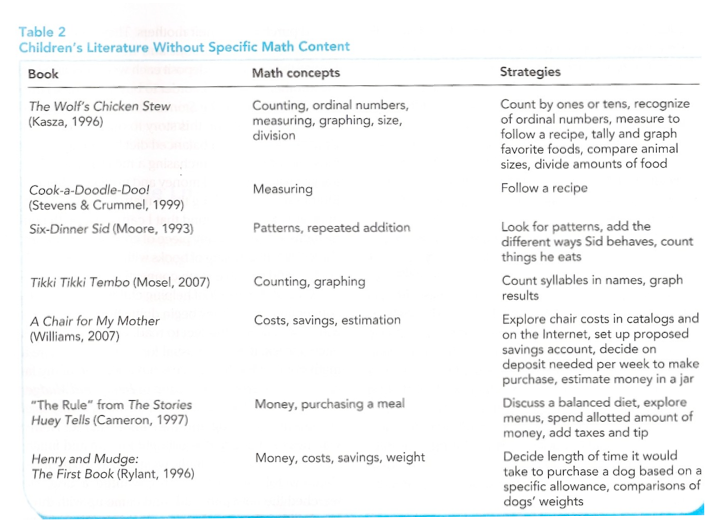
Constructed by Mary DeFalco Revisited 9/7/24


-
★Math Patterns in Children’s Literature Carol Hurst’s Children’s Lit.Site
MATH
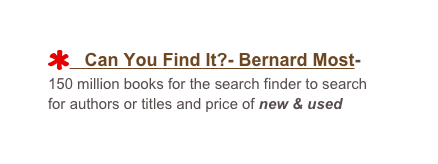
7 Surprising Benefits of Reading 20 Minutes a Day By Ashly Moore Sheldon • May 21, 2024


